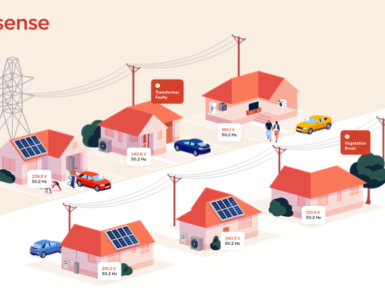Insecurity, rising costs, net-zero imperatives, and the cost of living crisis define today’s energy landscape. Government, energy retailers, and consumers all play their part in answering these complex challenges. However, consumers often feel powerless and unconvinced of their ability to play a meaningful role. In fact, in the last month, both Ofgem and the Department for Energy Security & Net Zero (DfESNZ) issued calls for input on how consumers can be effectively engaged in energy innovation – especially when considering new demand flexibility strategies.
Embracing demand flexibility empowers consumers to actively manage energy by optimising consumption in response to supply and pricing conditions. By working with energy retailers, consumers can shift energy use to lower-demand periods for preferable rates or bonuses. For example, National Grid ESO’s successful demand flexibility service (DFS) enabled a shift of over 3,300MWh of electricity during peak times. British Gas has rewarded customers with over £1.8 million for cutting consumption at specific times.
DFS strategies create a win-win for all. For utilities and energy providers, it helps avoid grid overloads and reduces the need to use expensive or unsustainable backup power sources. In June coal-fired power plants were restarted to meet demand during soaring temperatures, but with domestic demand flexibility at scale this could have been avoided. So, it also supports sustainability goals – all while households enjoy reduced energy bills and rewards.
It is clear that DFS can play a huge role in alleviating today’s energy crisis. However, while schemes have proved popular in trials, rolling these schemes out widely will require unengaged consumers to become active participants.
Moreover, most domestic flexibility solutions in the market today are expensive and difficult to scale, requiring the installation of connected batteries or other appliances. Time-of-use tariffs have poor uptake, and customers struggle to cut enough consumption at the correct times. However, with the right technology and an engaged and informed cohort of customers, flexibility can be secured at a much greater scale and much lower cost.
As DfESNZ asks, ‘How can energy retailers actively encourage and support consumers to engage in flexible consumption behaviour?’, and ‘What barriers currently prevent retailers from doing so?’
How AI delivers instant, tangible energy benefits for all
To deliver domestic demand flexiblity, we need a solution that is both effective and scalable. Unless a critical mass of homes in the UK can participate, we won’t corral enough load to make a difference. However, too many solutions for demand response depend on expensive solutions that restrict DSF to wealthy homeowners with space for a home battery or off street parking for an EV charger. Basic Time of Use tariffs and blanket demand flexibility alerts have struggled to consistently shift load because they give the problem to householders, who often lack the information to know which appliances to turn off in the moment.
So far, smart meters have not fulfilled their potential. They don’t provide the specific real time insight to both engage consumers and give them the tools to take definitive action on consumption.
However, the next generation of smart meters can deliver tangible user benefits by harnessing advanced technologies. At the same time, they can underpin scalable DFS programmes. By bringing real-time intelligence to the grid edge, suppliers can effectively manage demand, reward engaged customers (who can also cut bills), and operators can control and maintain the network with granular insight.
This is where new AI technologies come into their own and act as a powerful way to engage customers. Using real-time device detection, it is now possible to detect the highest-consuming appliances on the grid at any time, right down to individual devices. Rather than relying on expensive hardware to give an overall picture of energy consumption, AI software can be integrated into smart meters to provide Real-Time Load Disaggregation (RTLD).
Such next-gen smart meter technologies give consumers a product of genuine value. People can see instantly whether they’ve left an energy-hungry heater on, identify an old, inefficient water boiler, or understand the behaviours contributing to big energy bills. Energy consumption is broken down to individual appliances in the home, with instant feedback when it’s turned on or off. With this insight, users find it easy to reduce their consumption.
UK householders can save 9% on their bill – about £300 on average. Beyond the smart meter, no hardware or installation is required in the home. With the marginal cost of software being so low, such technology is the single most cost-effective energy efficiency investment for energy suppliers available today – more cost-effective than insulation, a new thermostat, a new boiler, or solar panels.
The same technology also makes demand response much more effective and targeted. AI technologies enable a different type of domestic demand side response that doesn’t rely on expensive in-home installations. Using real-time device detection, it can detect the highest consuming appliances on the grid at any time, and issue messages to consumers requesting they turn down specific devices. The same technology makes time-of-use tariffs much more effective. Immediately before a change in pricing, consumers can be messaged with a reminder and provided with suggestions on the precise appliances they should consider turning down. The flexibility and immediacy mean even dynamic time-of-use tariffs become viable.
This technology is now rolling out on next generation smart meters in North America and Asia Pacific, with nearly 5m homes to benefit so far. Moreover, it has been shown to shift 18% off peak load during demand peak events – three times greater than previous best in class.
Magic in the meter
Managing the grid is going to become extraordinarily challenging in the coming years. The electrification of heat and transport will trigger a surge in load. A grid dependent on renewables will be unable to dispatch sufficient supply to balance it. The spikes in demand will exacerbate peak pricing. Energy suppliers that can limit consumption during those times will reduce their costs and grow their margins. At the same time, consumers must become engaged with these challenges and be encouraged and rewarded for the part they will play.
AI-ready smart meters, capable of real-time load disaggregation, offer a compelling response to many facets of today’s energy crisis. Benefiting consumers, retailers, and the environment, a small investment in building more capable smart meters will deliver immense benefits several times over for decades to come. As Ofgem and DfESNZ consider vital questions of consumer engagement, they must not miss the potential that could lie at the heart of every home: truly smart meters that empower, engage, and crucially, deliver on their promise.







